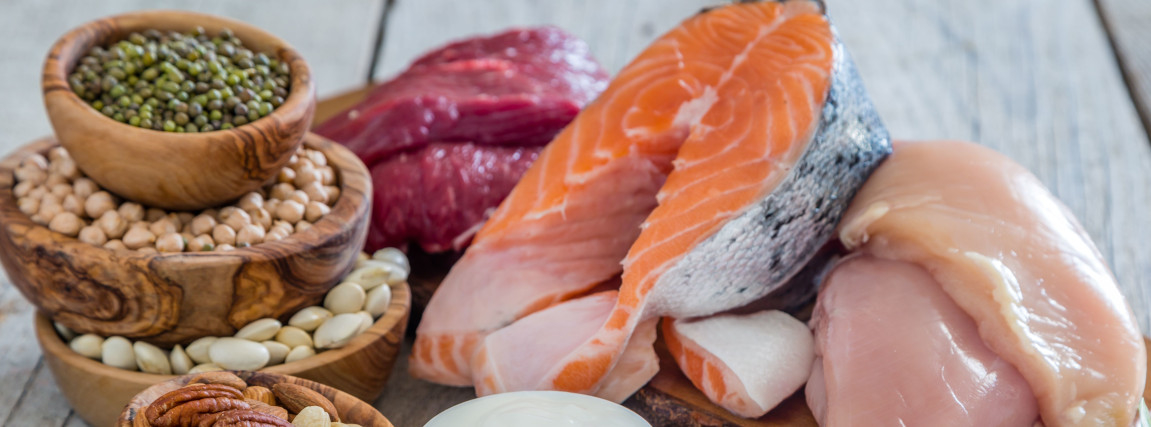
Benefits of protein foods include:
- Proteins function as building blocks for bones, muscles, cartilage, skin and blood. They are also building blocks for enzymes, hormones and vitamins. Proteins are one of three nutrients that provide calories (the others are fat and carbohydrates).
- B vitamins found in this food group serve a variety of functions in the body. They help the body release energy, play a vital role in the function of the nervous system, aid in the formation of red blood cells and help build tissues.
- Iron is used to carry oxygen in the blood. Many teenage girls and women in their child-bearing years have iron-deficiency anemia.
- Magnesium is used in building bones and in releasing energy from muscles.
- Zinc is necessary for biochemical reactions and helps the immune system function properly.
- EPA and DHA are omega-3 fatty acids found in varying amounts in seafood. Eating 8 ounces per week of seafood may help reduce the risk of heart disease.
How much should you eat from the protein food group?
The amount of food from the protein foods group you need to eat depends on age, sex and level of physical activity. Most Americans eat enough food from this group, but need to make leaner and more varied selections of these foods. Recommended amounts for protein foods are given in ounces, and range from 5 to 6 ½ ounces for adults, and 2 to 6 ½ ounces for children and teens.
All foods made from meat, poultry, seafood, beans and peas, eggs, processed soy products, nuts and seeds are considered part of the protein foods group. Beans and peas are also part of the vegetable group.
Tips for eating protein foods
- Beans and peas are considered both a protein food and a vegetable. They’re naturally low in fat, high in fiber and inexpensive to buy compared to other protein foods.
- Enjoy seafood or fish a couple of times each week. Buy fresh when it’s on sale. Stock up on frozen or canned and watch for sales to help reduce the cost.
- Snack on unsalted or low-salt nuts and seeds in small portions.
- The leanest beef cuts include round steaks and roasts (eye of round, top round, bottom round, round tip), top loin, top sirloin, and chuck shoulder and arm roasts.
- The leanest pork choices include pork loin, tenderloin, center loin, and ham.
- Choose lean ground beef. To be considered "lean," the product has to be at least 92% lean/8% fat.
- Buy skinless chicken parts or take off the skin before cooking.
- Boneless skinless chicken breasts and turkey cutlets are the leanest poultry choices.
- Choose lean turkey, roast beef, ham or low-fat luncheon meats for sandwiches instead of luncheon/deli meats with more fat, such as regular bologna or salami.